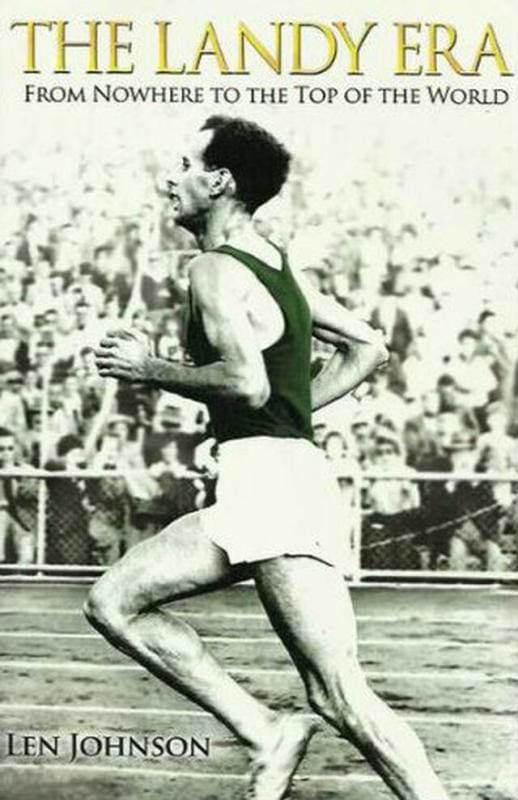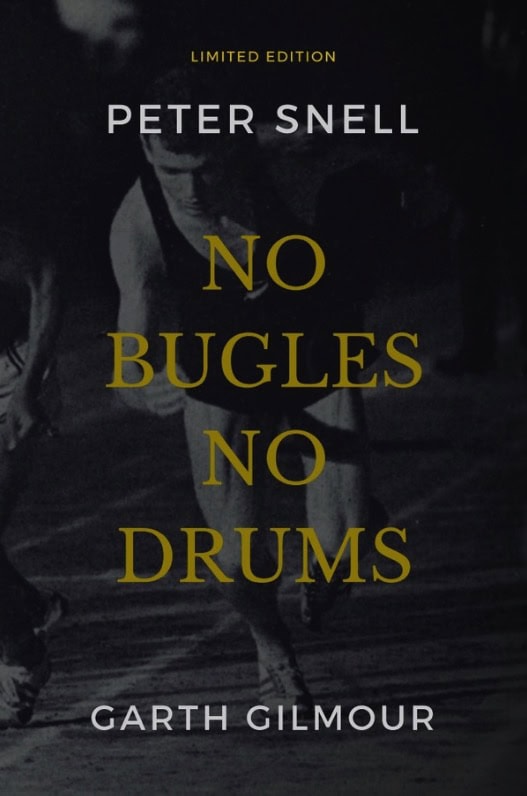“You can’t sit there. Frank Shorter just sat in that chair.”
This writer has long adjusted himself to the fact of not being lord of his own household. Even so, being told not to sit in any chair I chose at the empty kitchen table was a confronting reminder of my status. That it was because one of the world’s greatest marathoners had recently occupied it took a little longer to sink in.

It turned out Frank Shorter had sat in that very chair a few hours earlier: indeed, he had a cup of tea while in occupation. Frank was in town as a celebrity entrant for the Melbourne marathon. The wife of the race organiser was hosting him for the day, they had just been out to Healesville Sanctuary to see the koalas, kangaroos and platypuses and were running out of things to do so Rhonda said to Frank, “would you like to drop into my friend Anne’s place for some afternoon tea.”
Which was why, on my return from reporting on a tedious AFL game at nearby Waverley Park, I was not allowed to sit in “Frank’s seat” and why the tea bag he had used was sitting in a place of honour on the kitchen sink windowsill (where it remained for quite some time).
And I’d missed meeting Frank Shorter, one of our running heroes, something that was fortunately corrected at the end of the marathon the following day. From memory, we all drank takeaway cappuccinos from one of the coffee carts then.
Frank Shorter’s name and Frank Shorter’s deeds were constantly cropping up in the training sessions of the Melbourne Pack. And why not given his record as the great marathoner of the 1970s – an Olympic gold medal in Munich in 1972 and a silver in Montreal four years later; four straight wins at Fukuoka from 1971 to 1974 – was the stuff of legends. And he’d been a pivotal figure as the road running boom took marathon running from a pastime for eccentrics to a status as everyman’s (and, increasingly, everywoman’s) personal Mt Everest.

Even when Frank didn’t perform great, he still commanded attention. In the New York finish chutes one year Shorter, having had a very ordinary run, was recognised by a fellow finisher: “You’re Frank Shorter, aren’t you?” “No,” replied Frank, “but I used to be.” If only we could come up with something so cool after a bad race.
Frank Shorter had a way with words which comes through in a recent piece by Simon Turnbull for World Athletics. Turnbull knows his running. A northern Englander who grew up around Gateshead and wrote insightfully about local heroes Brendan Foster, Mick McLeod and Steve Cram, Steve Ovett and Sebastian Coe, and English athletics in general.
The impetus for Turnbull’s piece was the donation by Shorter of a signed team t-shirt from the 1971 Pan-American Games, where Shorter won the 10,000 metres and marathon to kick-start his international career.
In that marathon, Shorter had to make a pit-stop, leaving his US teammate Kenny Moore and several others to break away. Shorter got back into the race and gradually regained the pack. He snuck up behind Moore, announcing his return with a “Yoo hoo, I’m back.”
Shorter reprised a variation on this line in the Montreal Olympic marathon. Running his first marathon and rightly assigning Shorter the favourite’s role, 5000-10,000 gold medallist Lasse Viren shadowed the American’s every move until he briefly lost him in the shuffle at a drink station. Viren looked this way and that until Shorter announced: “I’m over here Lasse.”
Shorter was in the US team for the world cross-country in Rabat in 1975, the first time Australia competed. Chris Wardlaw and Bill Scott took the opportunity after a course inspection to run back with Frank to the team accommodation. Surprised at how slowly Shorter ran, Scott soon took off on his own, leaving Wardlaw to marvel at how easy the Olympic marathon champion ran.
All these stories and more floated around our Melbourne Pack training runs. It helped, too, that Shorter was on the cusp of the running wave, not only as a charismatic performer, but also fighting for the athletes to be treated as the professionals that they were instead of having to accept payments under the table or ‘laundered’ through federation trust funds.
And I think it was on Shorter’s 1994 visit that I discovered his admiration for our major running hero, Ron Clarke. Shorter, who won the Oslo 10,000 in 1970 which turned out to be Clarke’s farewell, spoke of being inspired early in his career by the sight of Clarke racing internationally in either his dark blue Victorian state singlet or the blue Glenhuntly club singlet with the dark blue boomerang.
There’s also one more reminder of Shorter which bobs up around this time most years. As part of its annual statistics summary Track & Field News lists the all-time ranking points scorers in each event. There, in equal fifth place with 48 points, are Shorter, his US teammate and partner in inspiring the US road running boom, Bill Rodgers, and Australia’s Rob de Castella.
Three great marathoners locked together. And if nothing lasts forever, this situation most likely won’t end any time soon. Eliud Kipchoge heads the list with a tally of 86; Kelvin Kiptum is not in the top 10 yet but presumably will be in a few more years.
But currently sitting behind Shorter, Rodgers and Deek are Haile Gebrselassie (8, 46 points) and Juma Ikangaa (9, 45). Equal 10 on 40 points are Abebe Bikila and Tsegaye Kebede.
None of these are going to be scoring any more points. Like Frank Shorter’s tea bag, these three great marathoners of the 1970-80s are going to be together in the top-10 for a fair while yet.
